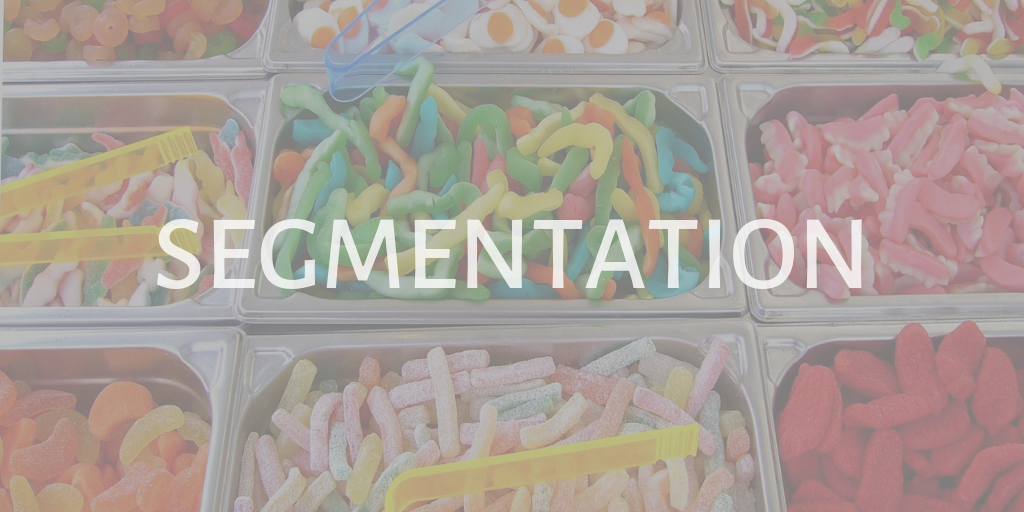March 23, 2019
Personalized customer experience and user segmentation: A winning marketing strategy


In the previous article, we’ve learned some tips about collecting phone numbers. Now it’s time to find out how to use that data.
It’s no news that businesses have to build long-term client relationships in order to generate more revenue and drive sales. One way to do it is by improving loyalty and engagement. That is why companies should focus on satisfying clients and making them feel unique. The right strategy for this would be segmenting users and building personalized customer communication. Let’s discuss a few tips.
Before user segmentation
It is essential to organize any existing user database properly. All information about your clients should be kept in one place. Regardless of the scale of your business, it is always a good solution to use some form of popular CRM with APIs and integrations so that you can easily manage user data and keep it up-to-date at all times. Small companies and start-ups can use Excel or Google Sheets but CRM is always a better option; especially because it is quite affordable these days, with so many cloud-based systems on the market.
Personalized offers convert users better than impersonal ones, so don’t forget to always address users by their names. For maximum personalization, you should create customer profiles and segment them into groups. Introduce various filters and categories, build charts to analyze the data, and optimize marketing campaigns for more conversions.
Some useful parameters for client segmentation
Purchase history and sum
Use this information to organize buyers by their shopping activity and financial status. You can then advertise more expensive items to more wealthy users; track purchase history to give discounts on products that interest your clients most; offer them related items and accessories. Furthermore, you can use data on total purchase sums to improve the tier system in your loyalty program and make more personalized offers in accordance with those tiers.
Age
Age segmentation is no less important than other parameters: the products that would appeal to millennials will not always be interesting to people in their fifties. Therefore, it is critical to personalize offers and communications for different age groups.
Gender
Different genders may find different classes of items or offers more appealing. A power drill may interest a male customer far more than cosmetics and vice versa. Sending undifferentiated offers may increase negative feedback and decrease user conversion if users feel that the offers frequently do not apply to them. Gender segmentation is useful even if you offer just one single unisex item, as the characteristics of a product may be presented to men and women differently depending on its features.
Loyalty card balance segmentation
If a loyalty program’s points have an expiration period, notify users before the points expire. Some people will make extra purchases to leverage soon-to-disappear bonuses. Another way of using the balance information would be offering rewards to clients who didn’t use points for a long time to re-engage these shoppers.
Birthdate
Enrich your database with customers’ birthdays, so that you can target them with personalized deals and discounts on these days. This way you will highlight a considerate attitude towards users and motivate them to take advantage of special offers that are only valid on their birthday.
Occupation
Knowing what a person does for a living can also add to customer personalization. You can congratulate people on professional holidays and offer job-related items.
Subscription preferences
If your subscription form has fields where a client can specify what type of content they would like to receive, then you can use this info to segment your database for increased personalization. Some people may prefer only receiving messages about sales and discounts. Others may only be interested in one category of items that you offer. If a user specifies particular item characteristics of interest, you now have more insight to improve customer personalization. For example, you can segment the clients of a footwear store by their size and send notifications when a particular size is in stock.
Time and frequency
Always consider time zones when planning a marketing campaign and segment your customers accordingly. This way people will receive your promo messages at a convenient time and not while they are asleep. It is also wise to ask customers how often they would like to receive your messages and set frequency filters to match (once a week, twice a month, etc).
Type of client: old vs. new
Motivate newcomers by giving them welcome bonuses to build customer relationships right from the start. Create an engaging experience and give them additional points after their subscription, so that they can go and spend them. Don’t forget about your old clients as well. Reward them for loyalty to support their interest in your brand. Offer them contests with prizes, make giveaways, or give them a special lifetime discount on all items.
Preferred channels
The digital age gives us countless possibilities to interact with customers. Make your users comfortable by communicating with them via their favorite method, be it Facebook, Viber, SMS, or Email. Go omni channel and leverage every popular messenger, use push notifications, SMS, and emails. Segment clients by their preferred channel. Ask the desired method of communication in the registration form; analyze support tickets and subscriptions to find the right approach for each customer; build the most personalized experience with maximum returns.Use these tips to segment your database and create personalized offers. It will help you build trusted & loyal relationships with your customers, reduce churn rates, and increase conversions. Using our platform and APIs you can always launch automated SMS and messaging campaigns to interact with your clients on a whole new level of omni channel communication.
Get back


